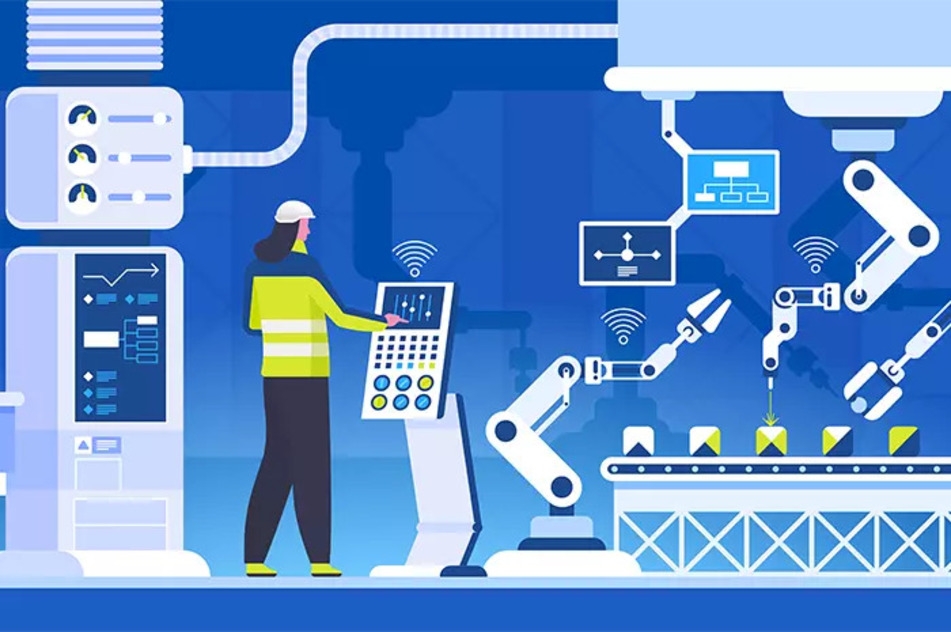Big Data Analytics in Manufacturing Industry: Environmental and Sustainability Benefits
Big Data Analytics is revolutionizing the manufacturing industry by enabling companies to harness vast amounts of data to improve efficiency, reduce costs, and enhance product quality. Here’s an overview of how Big Data Analytics is transforming manufacturing:
Introduction to Big Data Analytics in Manufacturing
Big Data Analytics involves the collection, processing, and analysis of large datasets to uncover patterns, trends, and insights that can inform decision-making. In the manufacturing industry, this data is generated from various sources, including sensors on machines, production lines, supply chains, and even customer feedback.
Benefits of Big Data Analytics in Manufacturing
Enhanced Operational Efficiency:
By analyzing data from production processes, manufacturers can identify bottlenecks and inefficiencies. This allows for the optimization of workflows and the reduction of downtime.
Predictive maintenance is another significant benefit. By monitoring equipment in real-time, manufacturers can predict when a machine is likely to fail and perform maintenance before it happens, thus avoiding costly downtime.
Improved Product Quality:
Big Data Analytics helps in monitoring and controlling the quality of products. By analyzing data from various stages of production, manufacturers can detect defects early and take corrective actions.
This leads to a reduction in waste and rework, ensuring that the final product meets the desired quality standards.
Supply Chain Optimization:
Data from suppliers, logistics, and inventory can be analyzed to optimize the supply chain. This includes improving demand forecasting, reducing lead times, and managing inventory more effectively.
Enhanced visibility into the supply chain helps manufacturers respond quickly to changes in demand and supply, reducing the risk of stockouts or overstocking.
Cost Reduction:
By identifying inefficiencies and optimizing processes, Big Data Analytics helps in reducing operational costs. This includes savings on energy consumption, raw materials, and labor.
Predictive analytics can also help in negotiating better terms with suppliers by providing insights into market trends and pricing.
Manufacturing Big Data Analytics often resides in disparate systems, making it challenging to integrate and analyze. Overcoming data silos and ensuring seamless data flow is crucial for effective analytics.Ensuring the accuracy and completeness of data is essential for reliable insights. Additionally, with the increasing volume of data, maintaining data security and privacy becomes a significant concern.Implementing Big Data Analytics requires a skilled workforce proficient in data science, analytics, and domain knowledge of manufacturing processes. Training and retaining such talent can be challenging.
Real-World Applications
Predictive Maintenance:
Companies like General Electric use Big Data Analytics to predict equipment failures and schedule maintenance, reducing downtime and maintenance costs.
Quality Control:
Pharmaceutical companies use Big Data to monitor production processes and ensure the quality of drugs. For example, by analyzing data from biopharmaceutical production, companies can optimize parameters to increase yield and quality.
Supply Chain Management:
Automotive manufacturers use Big Data to optimize their supply chains, ensuring timely delivery of parts and reducing inventory costs.
Conclusion
Big Data Analytics is a game-changer for the manufacturing industry. By leveraging data, manufacturers can achieve significant improvements in efficiency, quality, and cost-effectiveness. However, successful implementation requires overcoming challenges related to data integration, quality, and workforce skills. As technology continues to evolve, the role of Big Data Analytics in manufacturing will only grow, driving innovation and competitiveness in the industry.
Big Data Analytics in Manufacturing Industry: Environmental and Sustainability Benefits
Big Data Analytics is revolutionizing the manufacturing industry by enabling companies to harness vast amounts of data to improve efficiency, reduce costs, and enhance product quality. Here’s an overview of how Big Data Analytics is transforming manufacturing:
Introduction to Big Data Analytics in Manufacturing
Big Data Analytics involves the collection, processing, and analysis of large datasets to uncover patterns, trends, and insights that can inform decision-making. In the manufacturing industry, this data is generated from various sources, including sensors on machines, production lines, supply chains, and even customer feedback.
Benefits of Big Data Analytics in Manufacturing
Enhanced Operational Efficiency:
By analyzing data from production processes, manufacturers can identify bottlenecks and inefficiencies. This allows for the optimization of workflows and the reduction of downtime.
Predictive maintenance is another significant benefit. By monitoring equipment in real-time, manufacturers can predict when a machine is likely to fail and perform maintenance before it happens, thus avoiding costly downtime.
Improved Product Quality:
Big Data Analytics helps in monitoring and controlling the quality of products. By analyzing data from various stages of production, manufacturers can detect defects early and take corrective actions.
This leads to a reduction in waste and rework, ensuring that the final product meets the desired quality standards.
Supply Chain Optimization:
Data from suppliers, logistics, and inventory can be analyzed to optimize the supply chain. This includes improving demand forecasting, reducing lead times, and managing inventory more effectively.
Enhanced visibility into the supply chain helps manufacturers respond quickly to changes in demand and supply, reducing the risk of stockouts or overstocking.
Cost Reduction:
By identifying inefficiencies and optimizing processes, Big Data Analytics helps in reducing operational costs. This includes savings on energy consumption, raw materials, and labor.
Predictive analytics can also help in negotiating better terms with suppliers by providing insights into market trends and pricing.
Manufacturing Big Data Analytics often resides in disparate systems, making it challenging to integrate and analyze. Overcoming data silos and ensuring seamless data flow is crucial for effective analytics.Ensuring the accuracy and completeness of data is essential for reliable insights. Additionally, with the increasing volume of data, maintaining data security and privacy becomes a significant concern.Implementing Big Data Analytics requires a skilled workforce proficient in data science, analytics, and domain knowledge of manufacturing processes. Training and retaining such talent can be challenging.
Real-World Applications
Predictive Maintenance:
Companies like General Electric use Big Data Analytics to predict equipment failures and schedule maintenance, reducing downtime and maintenance costs.
Quality Control:
Pharmaceutical companies use Big Data to monitor production processes and ensure the quality of drugs. For example, by analyzing data from biopharmaceutical production, companies can optimize parameters to increase yield and quality.
Supply Chain Management:
Automotive manufacturers use Big Data to optimize their supply chains, ensuring timely delivery of parts and reducing inventory costs.
Conclusion
Big Data Analytics is a game-changer for the manufacturing industry. By leveraging data, manufacturers can achieve significant improvements in efficiency, quality, and cost-effectiveness. However, successful implementation requires overcoming challenges related to data integration, quality, and workforce skills. As technology continues to evolve, the role of Big Data Analytics in manufacturing will only grow, driving innovation and competitiveness in the industry.





